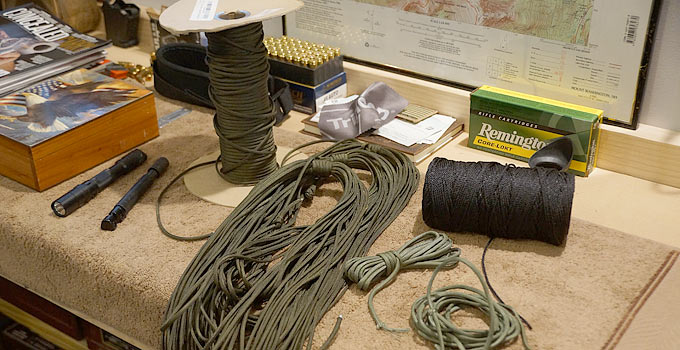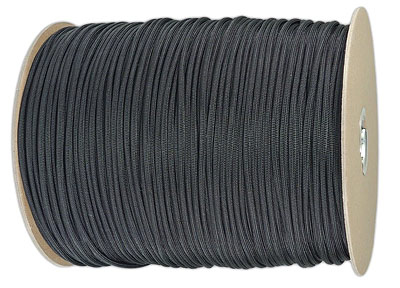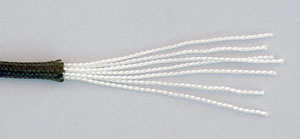Survival Kit Paracord | What it’s Used For | How Much You Need

Paracord is popular for many uses! I keep a large spool of it in the shop. From there I can peel off various lengths for whatever I need it for. Like keeping some in various kits. But how much paracord do I need?
There are lots of practical uses for paracord and it’s pretty much mandatory to have a length of it in a emergency kit.
The questions are:
“What are the uses for paracord?”
“How much paracord do I need for a survival kit?”
Each time that I put together a kit or go through an existing kit, I ask myself the same question, how much paracord do I need?
So, what’s the answer??
You do have at least ‘some’ cordage in your kit, right?
SPOOLS OF #550 CORD
(view on amzn)
What is Paracord Used For?
Before we can figure out how much or what length of paracord to bundle in your survival kit, we need to consider what we might use it for.
Note: Paracord (cordage) is one of The 5 C’s Of Survivability
What might be the most likely uses, given the purpose of your specific survival kit?
The uses for paracord are countless.
I could sit here and brainstorm 100 uses for paracord.
Here are a few:
Uses for Paracord
Survival bracelet
Stringing up a Tarp
Tarp Tie Down
Tent and Pole support, building shelters
Clothes Line
Tow Line
Braiding for even more combined strength
Wrap handles for walking sticks
Equipment Guy-lines
Pack Strap, Fasten, lash and secure gear to backpack
Garden Lines
Shelter Making
Lean-To’s
Suspend a hammock
Replace broken shoelaces, boot laces
Fire Bow
Lanyard
Hang sunglasses around your neck
Knife Handle Wrap
Hang a water container (with spigot) from a tree branch
Lifeline – it will support the weight of a human
Livestock leads and dog leashes
Bowstring
Sling
Suspend a field communications antenna in a tree
Bundle wood together to haul back to camp
Pet collar, leash
Rope ladder
Suspending, elevating a hammock
Nets
Snare
Traps
Belts
Splint
Tourniquets
Climbing
Crafts
Handle wraps
Inner strands: sewing, fishing line, fly lures, trapping-snares, dental floss, emergency suture
How Does #550 Paracord Hold 550 Pounds?
Mil-spec #550 paracord has 7 inner strands (nylon) within a woven nylon outer shell.
Evidently the woven nylon outer shell has a 250 pound tensile strength and each of the inner nylon strands has approximately 35 pound tensile strength.
Note that each inner strand can also be unwound into 2 smaller strands.
Rothco Paracord (100′ shank)
(view on amzn)
Small Diameter, Light Weight, High Tensile Strength
The nice thing about paracord is the small diameter compared with it’s tensile breaking strength (typically 550 pounds).
While the repetitive ‘working load’ is less, paracord makes an efficient use of size & weight versus usability for an emergency survival kit, bug out bag, whatever…
How much Paracord ??
I’ve listed some uses (add your own below).
So how much should we include in our kits?
You can wrap up 20 feet into a fairly small coil.
Even 100 feet of it doesn’t take up too much space in a pack.
I would suggest AT LEAST 20 feet of paracord as a general minimum. That’s probably enough for many typical uses.
With that said, I would sure feel better with 100 feet of it. It’s so ridiculously light weight that stowing a 100 foot shank of paracord in one’s pack is no big deal.
(UPDATE) Having tallied up the comments below from the original post date of this article, a common length of #550 paracord that people tend to keep in their kit is 100′.
(This article was originally posted early in 2018, though I’ve just updated some info.)
I typically buy a 1,000 foot roll of cord and feed off that until I need more. That’s the best price per foot compared to getting smaller quantities. In fact I need to order another roll soon!
[ Read: Survival Gear for Preparedness – What you Need and Why ]
[ Read: Survival Kit List Of 10 Essential Items ]
